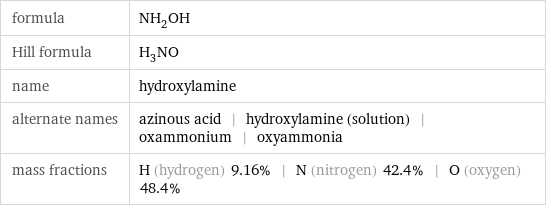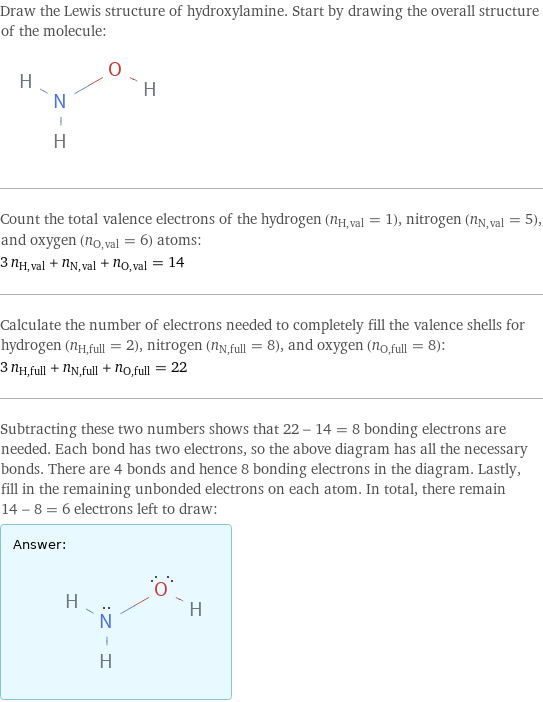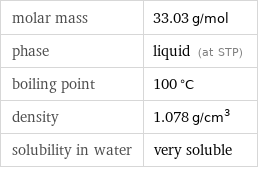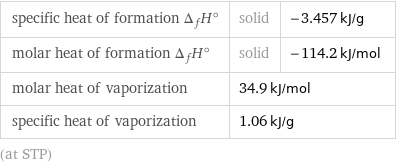Input interpretation

hydroxylamine
Chemical names and formulas

formula | NH_2OH Hill formula | H_3NO name | hydroxylamine alternate names | azinous acid | hydroxylamine (solution) | oxammonium | oxyammonia mass fractions | H (hydrogen) 9.16% | N (nitrogen) 42.4% | O (oxygen) 48.4%
Lewis structure

Draw the Lewis structure of hydroxylamine. Start by drawing the overall structure of the molecule: Count the total valence electrons of the hydrogen (n_H, val = 1), nitrogen (n_N, val = 5), and oxygen (n_O, val = 6) atoms: 3 n_H, val + n_N, val + n_O, val = 14 Calculate the number of electrons needed to completely fill the valence shells for hydrogen (n_H, full = 2), nitrogen (n_N, full = 8), and oxygen (n_O, full = 8): 3 n_H, full + n_N, full + n_O, full = 22 Subtracting these two numbers shows that 22 - 14 = 8 bonding electrons are needed. Each bond has two electrons, so the above diagram has all the necessary bonds. There are 4 bonds and hence 8 bonding electrons in the diagram. Lastly, fill in the remaining unbonded electrons on each atom. In total, there remain 14 - 8 = 6 electrons left to draw: Answer: | |
3D structure

3D structure
Basic properties

molar mass | 33.03 g/mol phase | liquid (at STP) boiling point | 100 °C density | 1.078 g/cm^3 solubility in water | very soluble
Units

Liquid properties (at STP)

density | 1.078 g/cm^3 vapor pressure | 8.998 mmHg refractive index | 1.39
Units

Thermodynamic properties

specific heat of formation Δ_fH° | solid | -3.457 kJ/g molar heat of formation Δ_fH° | solid | -114.2 kJ/mol molar heat of vaporization | 34.9 kJ/mol | specific heat of vaporization | 1.06 kJ/g | (at STP)
Chemical identifiers

CAS number | 7803-49-8 PubChem CID number | 787 PubChem SID number | 24867438 SMILES identifier | NO InChI identifier | InChI=1/H3NO/c1-2/h2H, 1H2 MDL number | MFCD00044522
NFPA label

NFPA label

NFPA health rating | 2 NFPA fire rating | 2
Safety properties

flash point | -18 °C autoignition point | 265 °C

DOT numbers | 3287
Toxicity properties

RTECS classes | mutagen